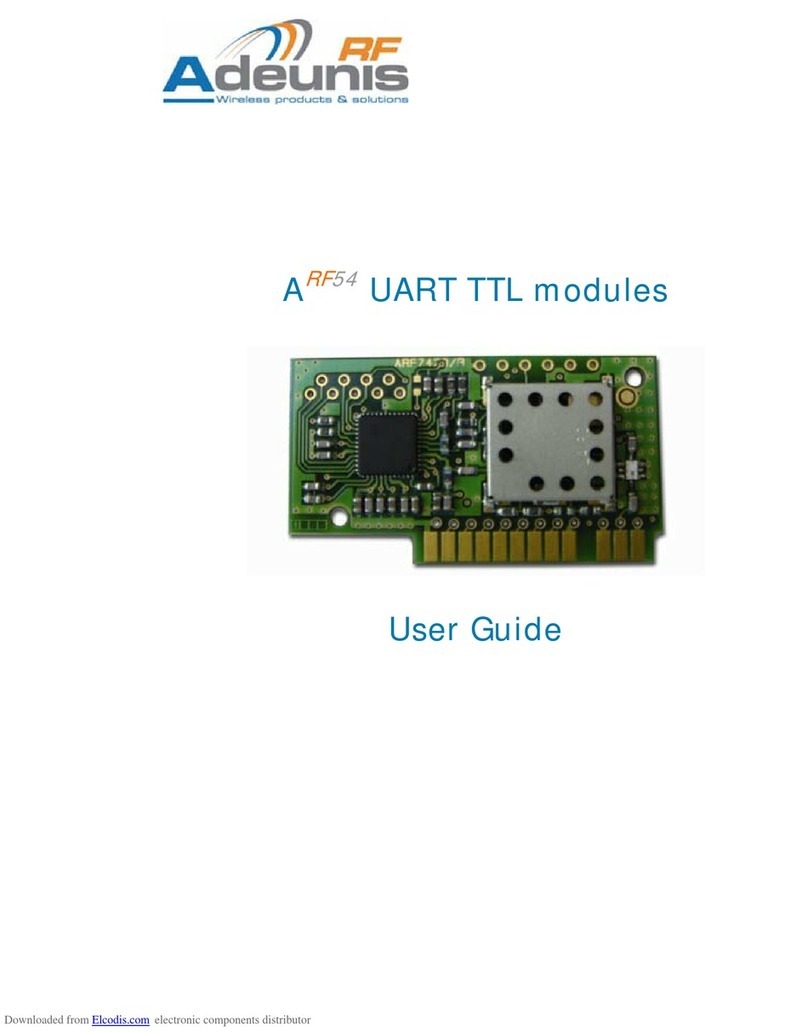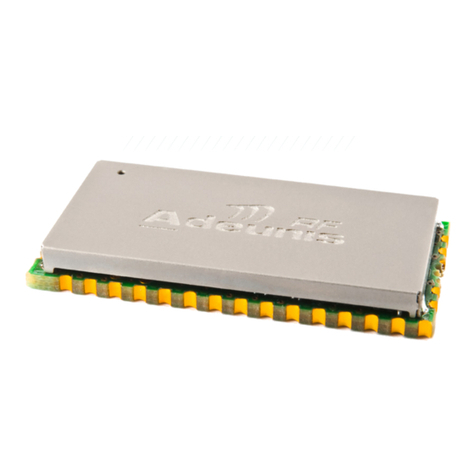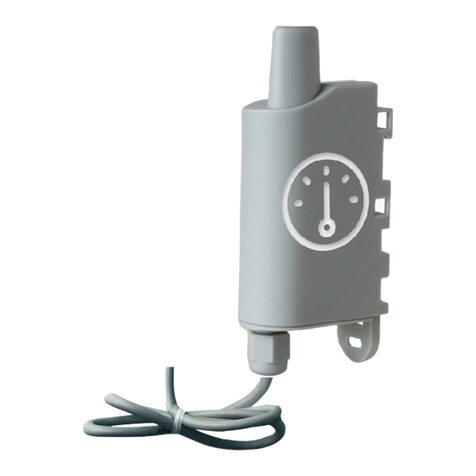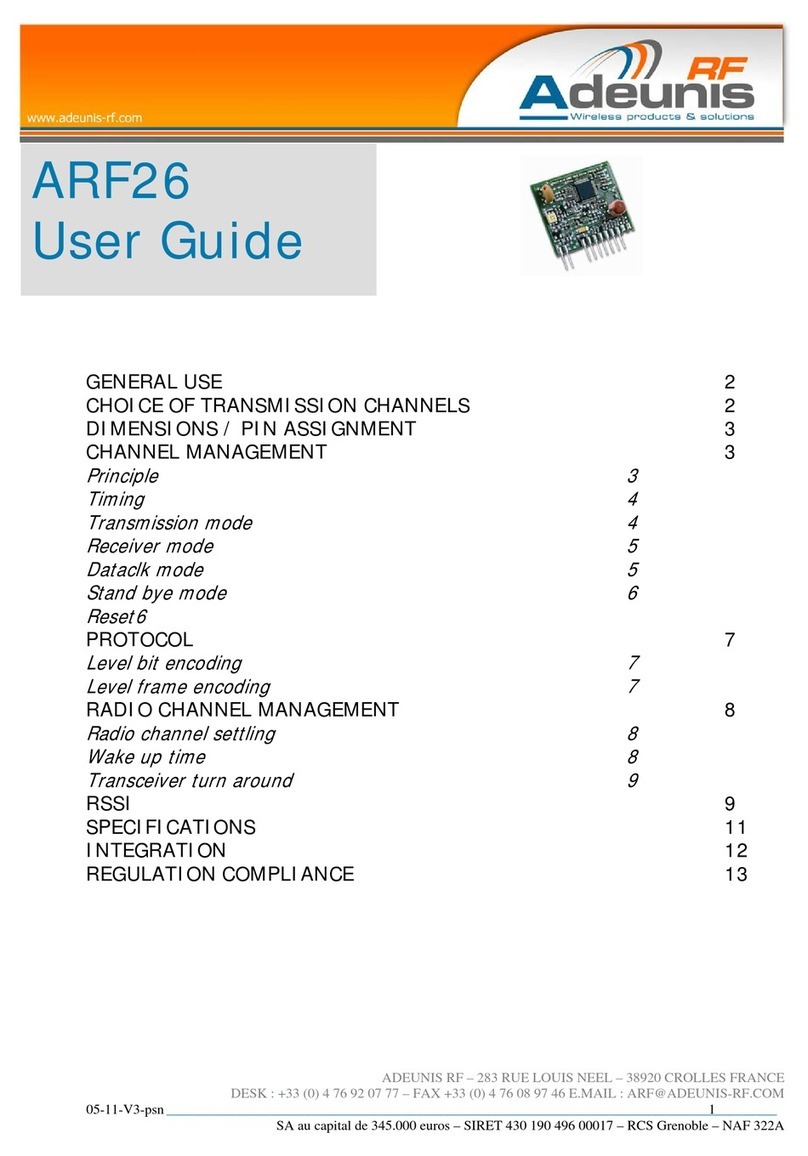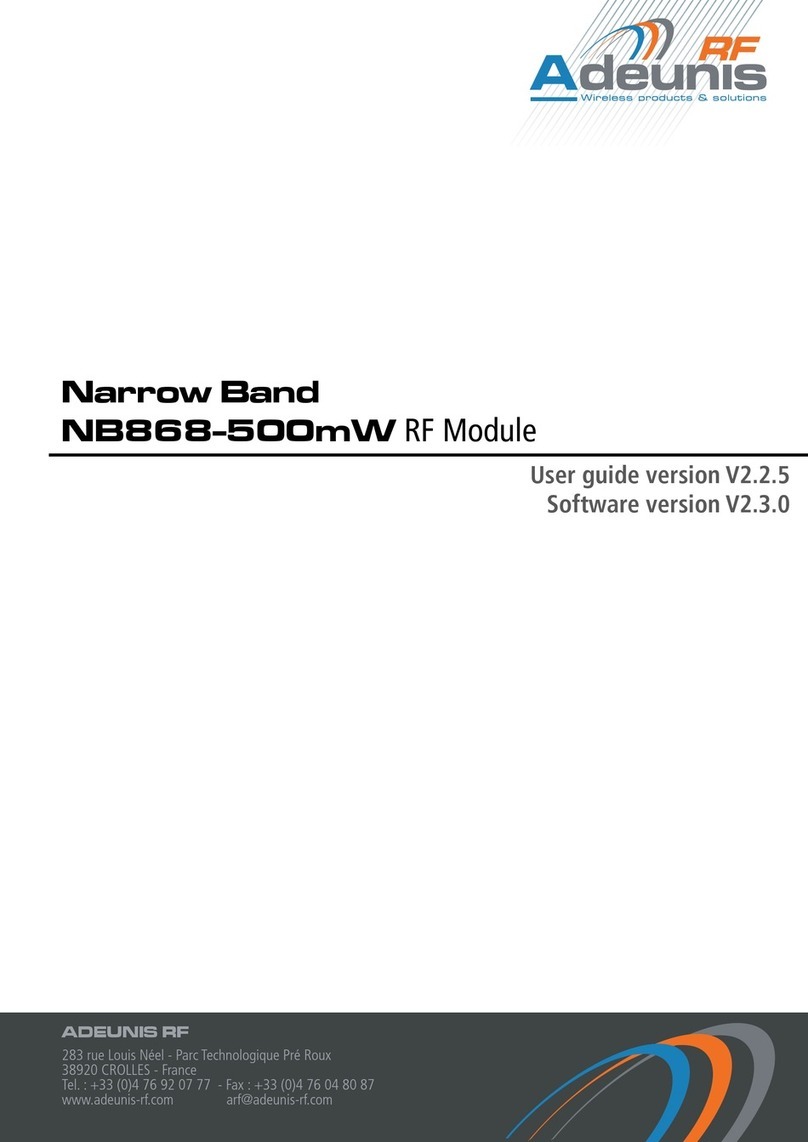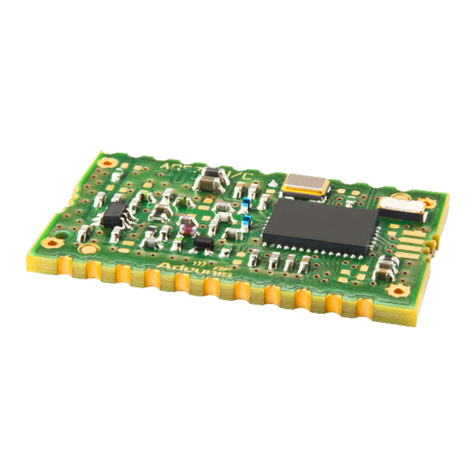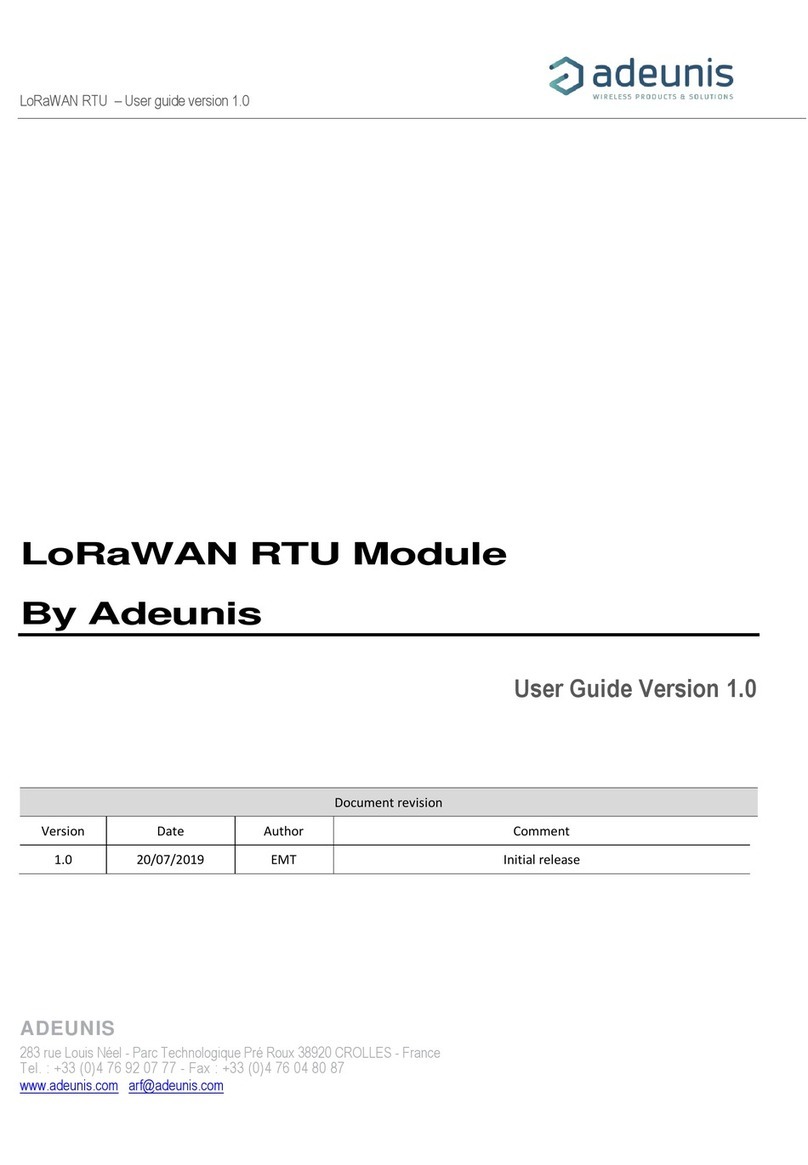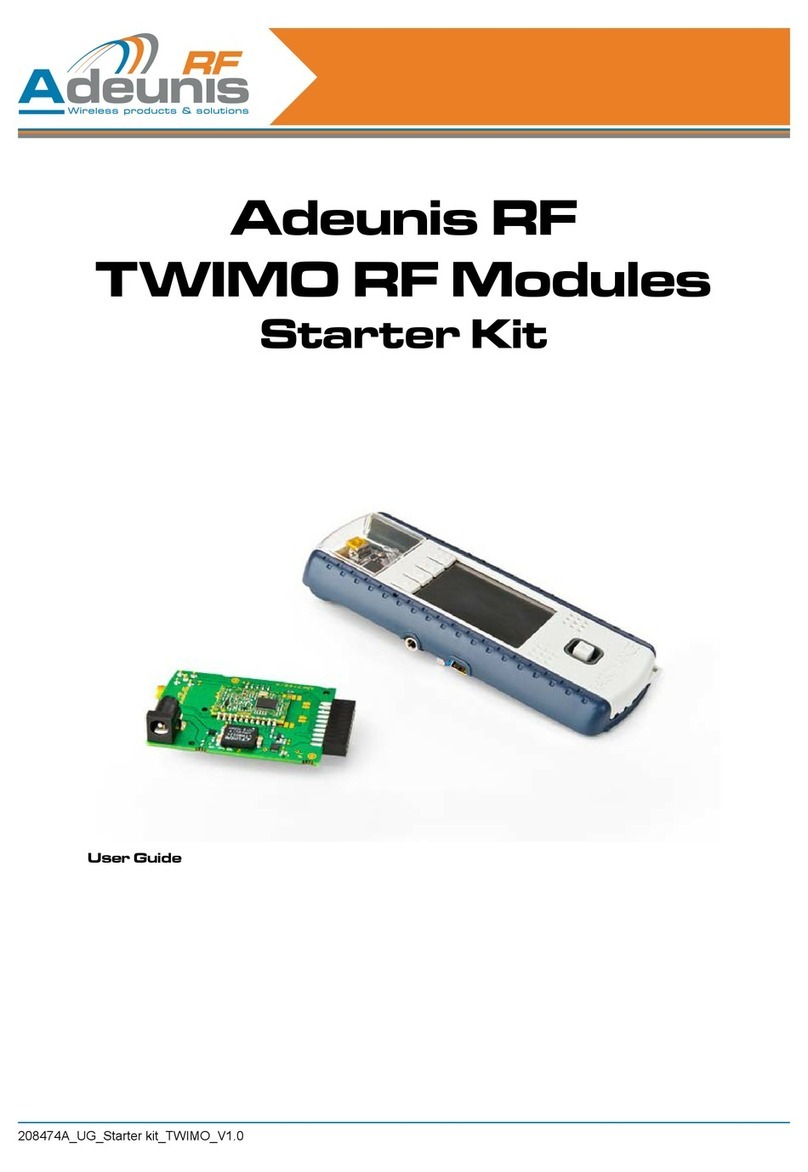Page 8/ 25
Ce dispositif est conforme aux règles de la FCC part 15 and à la norme CNR-210 d’Industrie Canada applicable aux
appareils radio exempts de licence. Son fonctionnement est sujet aux deux conditions suivantes : (1) le dispositif ne doit pas
produire de brouillage préjudiciable, et (2) ce dispositif doit accepter tout brouillage reçu, y compris un brouillage susceptible
de provoquer un fonctionnement indésirable.
Cet équipement a été testé et déclaré conforme aux limites d’un appareil numérique de classe B, conformément à la partie
15 des règles de la FCC. Ces limites sont conçues pour fournir une protection raisonnable contre les interférences nuisibles
dans une installation résidentielle. Cet équipement génère, utilise et peut émettre de l’énergie radiofréquence et, s’il n’est
pas installé et utilisé conformément aux instructions, peut causer des interférences nuisibles aux radiocommunications. Il est
cependant toujours possible que des interférences se produisent dans le cadre d’une installation particulière.
Si cet appareil produit des interférences nuisibles à la réception des programmes de radio et de télévision –détectables lors
de la mise hors tension ou en tension de l’appareil-l’utilisateur est encouragé à mettre en œuvre une ou plusieurs des
mesures suivantes pour remédier à ces interférences :
•Réorienter ou déplacer l’antenne de réception.
•Augmenter la distance entre l’équipement et le récepteur.
•Branchez le matériel à une sortie sur un circuit différent de celui auquel le récepteur est branché.
•Prendre conseil auprès du commerçant ou d’un technicien de radio/TV expérimenté.
Tout changement ou modification non expressément approuvé par la partie responsable des mesures de conformité peut
amener l’utilisateur à se voir interdire l’usage de l’appareil.
Cet appareil est limité à l’exploitation des fréquences autorisées Partie 15, et ne peut pas être configuré par des utilisateurs
finaux ou des installateurs professionnels à fonctionner en dehors des bandes autorisées.
Conformément à la réglementation d’Industrie Canada, le présent émetteur radio peut fonctionner avec une antenne d’un
type et d’un gain maximal (ou inférieur) approuvé pour l’émetteur par Industrie Canada. Dans le but de réduire les risques de
brouillage radioélectrique à l’intention des autres utilisateurs, il faut choisir le type d’antenne et son gain de sorte que la
puissance isotrope rayonnée équivalente (p.i.r.e.) ne dépasse pas l’intensité nécessaire à l’établissement d’une
communication satisfaisante.
ATTENTION !
POUR UTILISATION DE DISPOSITIF MOBILE
.
l’élément radio est conforme aux limites d'exposition aux rayonnements RF de la FCC établies pour la population générale.
l’élément radio doit être installé de manière à assurer une distance de séparation d'au moins 20 cm de tout
personnes et ne doivent pas être co-localisés ou fonctionner en conjonction avec toute autre antenne ou émetteur.
Pour réduire le brouillage radioélectrique potentiel causé aux autres utilisateurs, le type d’antenne et son gain doivent être
choisis de manière à ce que la puissance rayonnée isotropiquement équivalente (par exemple) ne soit pas supérieure à celle
autorisée pour une communication réussie. "
Cet appareil a été conçu pour fonctionner avec les antennes répertoriées ci-dessous et avec un gain maximal de 6 dBi. Les
antennes ne figurant pas dans cette liste ou ayant un gain supérieur à 6 dBi sont strictement interdites d'utilisation avec cet
appareil. L'impédance d'antenne requise est de 50 ohms. ”
MobileMark PSKN3-925S Dipole à gain de 3 dBi (voir détails en annexe1)
Antenne PCB Adeunis 0 dBi +/- 2dBgain (voir détails en annexe1)
I installation OEM et étiquetage de conformité
Le module ARF8119A est étiqueté avec son propre numéro d’identification FCC. Si l’ID FCC n’est pas visible lorsque le
module est installé dans un autre périphérique, l’extérieur du périphérique sur lequel il est installé doit également afficher
une étiquette faisant référence au module.
Cette étiquette extérieure peut utiliser les libellés suivants:
“Contains Transmitter Module“ Contient le FCC ID: U3Z-ARF8119 ”
Toute formulation similaire exprimant le même sens peut être utilisée. Le bénéficiaire peut soit fournir une telle étiquette,
dont un exemple doit être inclus dans la demande d’autorisation d’équipement, soit fournir des instructions adéquates ainsi
